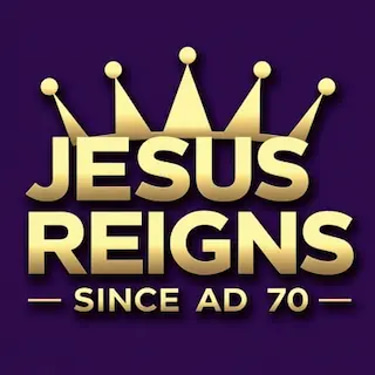Daniel 9:27 Isn’t a Peace Treaty. It’s Jesus!
Stevie DxYz
10/13/20255 min read


Read the text without the charts
Stop letting prophecy charts do your reading. Daniel 9:27 does not predict a modern Antichrist peace deal. It points to the Messiah confirming the New Covenant, ending the sacrificial system’s validity at the cross, and sealing it in AD 70 when the Temple fell, just as Jesus said it would.
Read Daniel 9:24-27 in context
Daniel 9:24-27 lays out seventy weeks for Jerusalem and the holy people to finish transgression, atone for sin, bring in everlasting righteousness, seal up vision and prophecy, and anoint the Most Holy (Daniel 9:24). Messiah arrives after seven plus sixty-two weeks, is cut off, and the people of a coming prince destroy the city and the sanctuary (Daniel 9:25-26). Then Daniel 9:27 says that he will confirm a covenant with many for one week, and in the middle of the week he will cause sacrifice and offering to cease.
The pronoun “he” is the Messiah
The word “he” means the Messiah in verses 25-26. The story is about what the Messiah does, not Roman family trees.
Action fit
Confirming a covenant and causing sacrifice and offering to cease matches the New Testament description of Jesus. It does not match the idea of a wicked leader signing a treaty. See Matthew 26:28, Luke 22:20, Isaiah 42:6, Isaiah 53:11-12, Jeremiah 31:31-34, Hebrews 8:6-13, Hebrews 9:26-28, Hebrews 10:9-18.
“For many” is Servant language
“For many” is the language of Isaiah about the Servant. Compare Isaiah 53:11-12 with Matthew 26:28 where Jesus says His blood is poured out for many.
Messiah confirmed the covenant in His blood
Jesus didn’t make a separate deal with modern Israel. He confirmed the New Covenant God’s promised.
Jeremiah 31:31-34. A New Covenant with the house of Israel and Judah
Isaiah 42:6 and 49:8. The Servant is given as a covenant to the people
Matthew 26:28 and Luke 22:20. This is my blood of the covenant, poured out for many
Romans 15:8. Christ became a servant to confirm the promises to the patriarchs
Hebrews 8:6-13. A better covenant on better promises, the old becoming obsolete
“He shall cause sacrifice and offering to cease”
This plays out in two stages. At the cross. And in history in AD 70.
The cross. By a single offering He perfected for all time those who are being sanctified. Where there is forgiveness, there is no longer any offering for sin. See Hebrews 9:26-28 and 10:10-18.
The torn veil announced the end of the old order’s authority that day (Matthew 27:51).
AD 70. Sacrifices literally stopped during the siege before the Temple burned. Josephus records that the daily sacrifice ceased and then describes the Temple’s destruction. That is the historical full stop the New Testament prepared you for. See Matthew 24:2 and Luke 21:5-6.
“In the middle of the week”
Jesus’ public ministry ran about three and a half years. That is the middle of the week. It culminated in the cross. The back half of the week saw the covenant confirmed to many within Israel through apostolic witness. See Acts 2-7, Romans 1:16, Acts 13:46. Judgment then fell on the city that rejected Him.
Abomination of desolation in their generation
Jesus ties Daniel to real first century events.
Matthew 24:15-34 places the abomination of desolation in that generation.
Luke 21:20-24 explains it clearly. When you see Jerusalem surrounded by armies.
Eusebius, Ecclesiastical History 3.5, preserves the memory that believers fled to Pella.
Tacitus, Histories 5:13, and Josephus, War 6, describe the siege and the ruin of the Temple.
Luke 21:22 says these are the days of vengeance, to fulfill all that is written.
No gap needed
Daniel 9:24 lists six goals. Finish transgression. End sins. Atone for iniquity. Bring everlasting righteousness. Seal up vision and prophecy. Anoint the Most Holy. The New Testament grounds these in Christ. See Hebrews 9-10, Romans 3:21-26, 2 Corinthians 5:21, Acts 10:38. There is no need to pause the clock for two thousand years.
The people of the coming prince
The text does not call the prince the destroyer. His people do the destroying. That is Rome’s legions under Titus. Jesus had already pictured this in His parable where a king sent his armies and burned the city. See Matthew 22:7 and Luke 21:20.
Answers to your futurist claims
“The he in verse 27 is Antichrist.”
Messiah carries the action. Confirm the covenant, for many, and the end of sacrifice fit Jesus. A seven year peace treaty idea is read into the text.
“There is a 2,000 year gap before week seventy.”
Daniel does not say that. The New Testament finishes the list in Daniel 9:24 in Christ. Jesus time stamps the crisis to that generation in Matthew 24:34.
“Confirming the covenant is a treaty.”
The covenant promise in Scripture is Jeremiah 31:31-34. Isaiah 42:6 says the Servant is the covenant. Jesus’ blood is the covenant. See Luke 22:20 and Hebrews 8-10. There is no verse where Antichrist ratifies a seven year pact with Israel.
“Sacrifices only ceased because Rome stopped them.”
Hebrews says the cross ended their meaning. AD 70 ended their practice. That is exactly the pattern in Daniel 9:27.
“The Temple must be rebuilt.”
Jesus targeted the Second Temple. Not one stone left, Matthew 24:2. Daniel ties the desolations to that city and that sanctuary in Daniel 9:26-27.
“Double fulfillment.”
The New Testament says Christ’s work is once for all. See Hebrews 9:26-28, Hebrews 10:10 and 10:14.
“Paul teaches a future seven year tribulation.”
Give chapter and verse. Paul places the judgment crisis in the first century and marks the Old Covenant as vanishing. See 1 Thessalonians 2:14-16 and Hebrews 8:13.
So what actually happened
Messiah arrived on schedule. Daniel 9:25, Mark 1:14-15
He confirmed the covenant in His blood for many. Matthew 26:28, Isaiah 53:11-12, Jeremiah 31:31-34
In the middle of the week He was cut off. Daniel 9:26-27, John 19:30
Sacrifices ceased in meaning. Hebrews 10:1-18. Then they ceased in practice in AD 70. Josephus, War 6
The abomination of desolation came with Roman armies in that generation. Matthew 24:15, Luke 21:20, Matthew 24:34
Vision and prophecy were sealed. The program tied to that city and that Temple was complete. Daniel 9:24, Luke 21:22
Sources you can verify
Scripture
Daniel 9:24-27; Isaiah 42:6; 53:10-12; Jeremiah 31:31-34; Matthew 24:2; 24:15-34; 26:28; Luke 21:20-24; John 19:30; Romans 15:8; Hebrews 8:6-13; 9:26-28; 10:9-18; Acts 2-7; Mark 1:14-15; 1 Thessalonians 2:14-16; 2 Corinthians 5:21; Acts 10:38; Matthew 22:7.
History
Josephus, War of the Jews 6.2.1 and 6.4-6.
Eusebius, Ecclesiastical History 3.5.
Tacitus, Histories 5:13.
What to do next
Read Daniel 9:24-27, Matthew 24, and Hebrews 9-10 together. Then read Josephus, War 6. If your church chart does not stand up to that lineup, drop the chart. Share this, then ask for chapter and verse on who the he in Daniel 9:27 really is.
